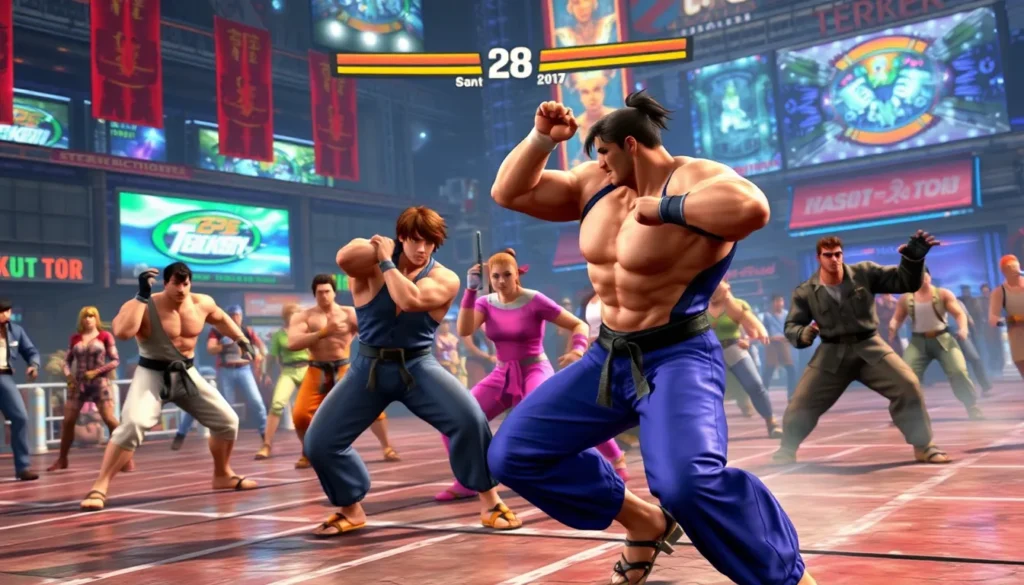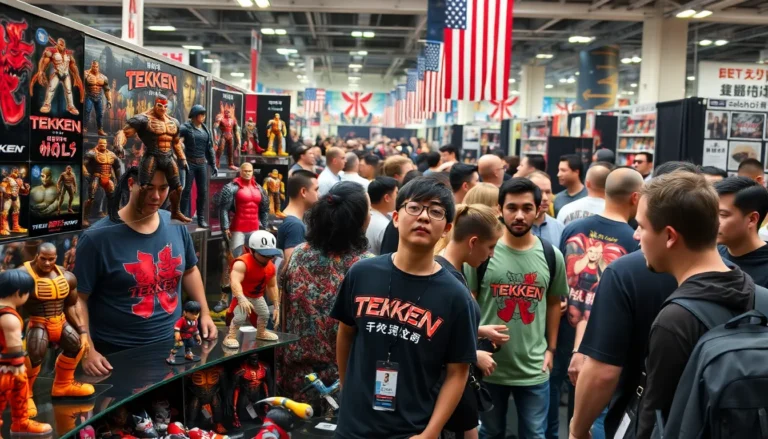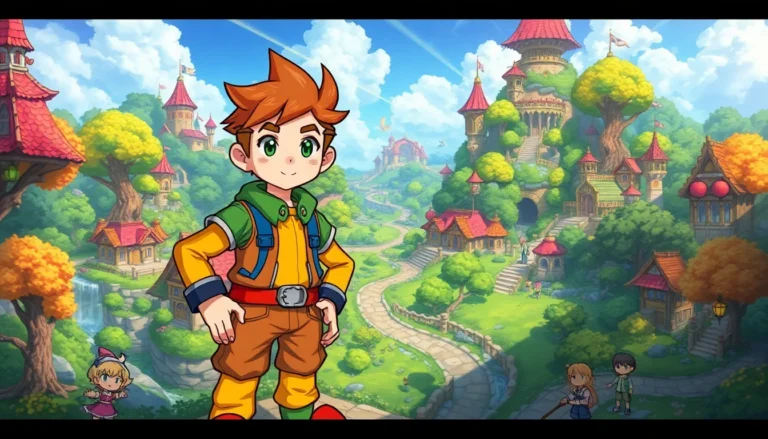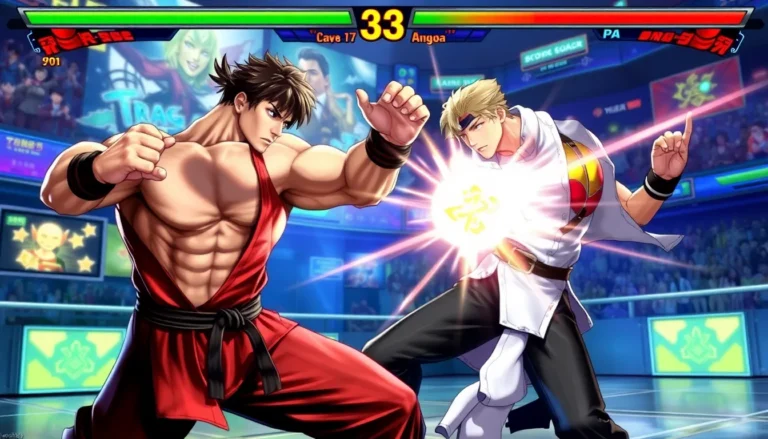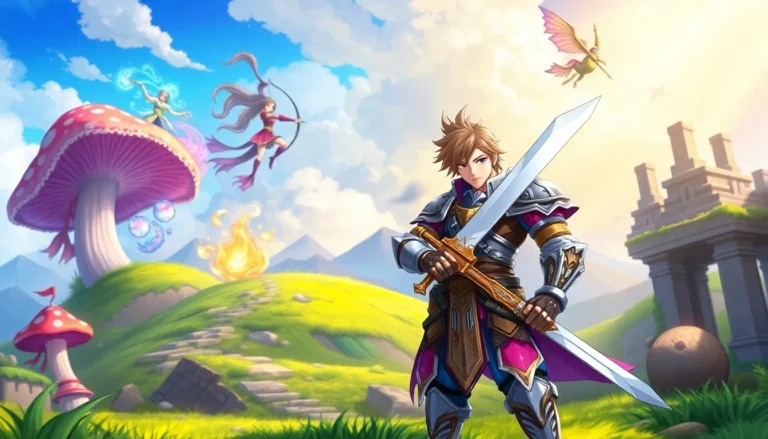Table of Contents
ToggleIn the world of fighting games, few titles pack as much punch as Tekken. Since its debut in 1994, this legendary franchise has not only delivered epic brawls but also a rich tapestry of characters and storylines that keep players coming back for more. From the fierce rivalry between the Mishima family to the quirky antics of beloved side characters, Tekken’s history is as captivating as a well-timed combo.
As players navigate through its evolving roster and intricate plots, they’ve witnessed the rise of iconic fighters and the fall of formidable foes. Whether you’re a seasoned veteran or a curious newcomer, the saga of Tekken offers plenty of drama, humor, and jaw-dropping moments. Dive into this exploration of Tekken’s history and discover how it transformed from a simple arcade game into a global phenomenon that continues to dominate the fighting game scene.
Overview of Tekken History
Tekken debuted in arcades in 1994, quickly establishing itself in the fighting game genre. Developed by Bandai Namco Entertainment, it introduced players to a diverse roster of characters and unique gameplay mechanics. The initial installment set the stage, showcasing the first clash between the Mishima family and their intricate dynamics.
Releasing sequels every few years, the franchise expanded its narrative and gameplay depth. Tekken 2 launched in 1995, introducing new fighters and enhancing gameplay elements such as the ability to juggle opponents. Tekken 3 followed in 1997, achieving critical acclaim and becoming one of the top-selling arcade games of its time.
Characters such as Jin Kazama and Hwoarang emerged in Tekken 3, further developing the series’ rich lore. With each new entry, Tekken introduced innovative features, including 3D movement and improved graphics, setting new standards in the fighting game community. Tekken 5, released in 2005, revitalized the franchise, incorporating classic characters while enhancing combat mechanics.
The series continued to grow, with Tekken 6 and Tekken Tag Tournament 2 expanding the fighter roster and offering diverse game modes. Each title became known for its intricate storylines and emotionally charged rivalries, especially within the Mishima family. Additionally, Tekken 7, launched in 2017, introduced new characters and a revamped gameplay system, further solidifying the franchise’s legacy.
Receiving numerous awards and accolades, Tekken remains central in esports, with tournaments showcasing its competitive scene. It appeals to veteran players and newcomers alike, proving that its engaging gameplay and dynamic storytelling keep it relevant in the gaming landscape. Through its evolution over decades, the franchise exemplifies enduring popularity and innovation in gaming.
The Origins of Tekken

Tekken began as a groundbreaking fighting game, marking its entry into the gaming world in 1994. Developed by Bandai Namco Entertainment, its creation stemmed from the desire to establish an iconic franchise in the genre.
Development and Release
The development of Tekken involved a dedicated team at Bandai Namco. Focus on 3D graphics and realistic fighting styles set it apart. Released in arcades first, its 3D polygonal graphics showcased new technological advancements. A home console version followed on PlayStation, introducing the franchise to a broader audience. This initial installment featured a mix of martial arts styles, bringing unique characters to the forefront. As the series progressed, each sequel built on the foundation laid by the original.
Initial Reception
Initial reception of Tekken was overwhelmingly positive, captivating players worldwide. Critics praised its character variety and fluid mechanics. Players enjoyed the detailed environments and engaging storyline, particularly regarding the Mishima family dynamics. Sales exceeded expectations, positioning it as a top contender in the fighting game market. Positive word-of-mouth further fueled its popularity. This success laid the groundwork for future installments, solidifying its place in gaming history.
Evolution of Gameplay Mechanics
Tekken’s gameplay mechanics have evolved significantly since its debut. Innovations in controls and combat systems shaped the franchise’s identity.
Key Features Introduced
Waving introduced 3D movement, allowing players to engage in dynamic battles. Juggling mechanics led to unique combos, creating excitement in matches. The introduction of Rage Arts in Tekken 7 gave players a comeback option, enhancing strategic play. Notably, the addition of online multiplayer expanded competitive opportunities, making it easier to connect globally.
Changes Over the Series
Each installment of Tekken featured noteworthy changes. Tekken 2 elevated character depth with unique fighting styles. Tekken 3 refined fluidity in animations, offering stunning visuals. Later, Tekken 5’s return to classic characters appealed to long-time fans. Tekken 6 introduced an array of characters designed for diverse playing styles. Finally, Tekken 7 revamped the system with advanced mechanics like power crush and wall-bounce, enhancing combat strategy.
Major Installments in Tekken History
The Tekken franchise boasts several significant installments that shaped its legacy in the fighting game genre.
Tekken 1 to Tekken 3
Tekken 1 debuted in 1994 as a groundbreaking 3D fighting game featuring 8 characters. Players quickly embraced characters like Kazuya and Paul, drawn by their unique fighting styles. Tekken 2 followed in 1995, adding 10 new fighters and introducing juggle combos that elevated competitive gameplay. Character depth expanded with each new addition. The series peaked with Tekken 3 in 1997, which showcased enhanced graphics and fluid animations, further captivating its audience. This installment featured another 23 characters and refined 3D movement mechanics, making matches more dynamic and engaging.
Tekken 4 to Tekken 7
Tekken 4 launched in 2001, introducing new gameplay mechanics like interactive environments. Players experienced heightened strategy due to the addition of sidestepping and new character dynamics. Tekken 5 revitalized the series in 2005, reintroducing classic fighters while enhancing combat systems and graphics. This entry’s revised mechanics appealed to both new and veteran players. In 2009, Tekken 6 brought a wider character selection and the introduction of rage mechanics, adding depth to matches. Tekken 7, released in 2017, solidified the franchise’s legacy with new characters and innovative systems like Rage Arts. Each installment in this era not only expanded the roster but also deepened strategic gameplay, keeping Tekken a vital component of the gaming landscape.
Impact on Fighting Game Genre
Tekken significantly shaped the fighting game genre with its groundbreaking technologies and gameplay features.
Innovations and Influence
Innovations in Tekken include pioneering 3D movement and intricate juggling mechanics, which transformed combat strategies. Tracks and move lists expanded character depth, allowing for varied play styles. Notable is the introduction of Rage Arts in Tekken 7, enhancing tactical decisions during matches. Furthermore, the use of interactive arenas added complexity to battles, giving players environmental advantages. Influence extends beyond gameplay, as Tekken’s storytelling, particularly the Mishima saga, engages players in character-driven narratives. Each sequel consistently introduced new mechanics, ensuring constant evolution within the franchise and inspiring rival games to adopt similar features for increased competitiveness in the genre.
Competitive Scene and Community
The competitive scene for Tekken has grown robust, fostering a dedicated community of players. Over the years, tournaments like EVO have featured Tekken prominently, showcasing top-level play and diverse strategies. Shadowing opportunities fostered by online multiplayer modes allow contestants worldwide to compete against each other. Community engagement thrives through forums and social media, where players share strategies, character guides, and match highlights. Players often build lasting friendships and rivalries at local events, further solidifying the franchise’s cultural impact. Notably, its accessibility encourages newcomers while maintaining depth for veterans, proving Tekken’s lasting appeal in the competitive gaming landscape.
Tekken’s journey from its arcade beginnings to a globally recognized franchise illustrates its profound impact on the fighting game genre. With each installment, it has pushed boundaries in gameplay mechanics and character development, captivating both new players and seasoned veterans. The franchise’s ability to innovate while maintaining a strong narrative has ensured its relevance in an ever-evolving gaming landscape. As Tekken continues to grow and adapt, it remains a cornerstone of competitive gaming, fostering a vibrant community and inspiring future generations of players.

